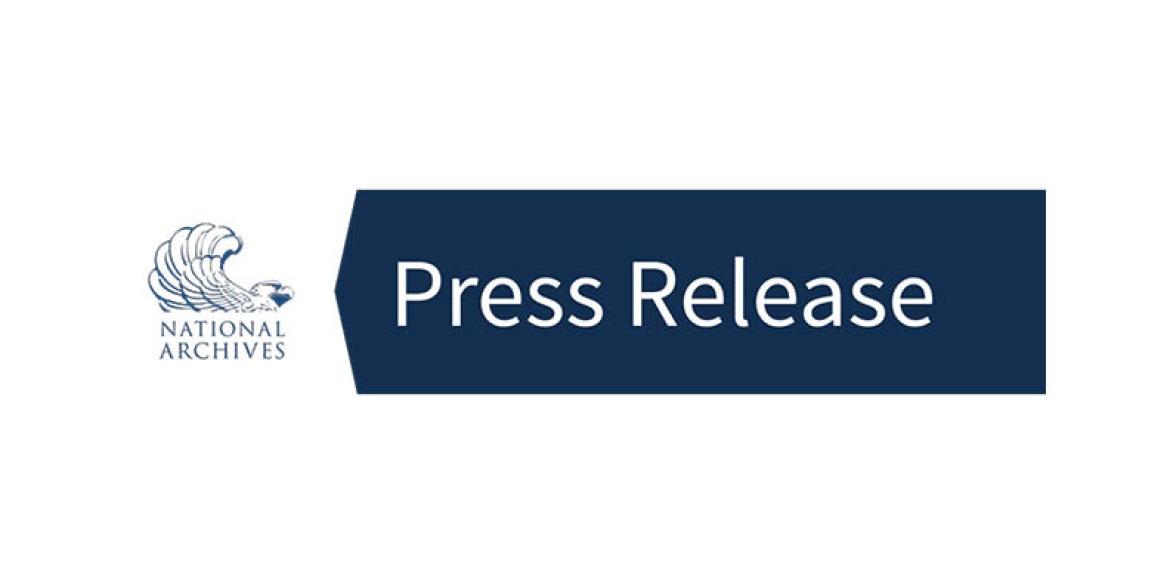
National Archives Unveils New Mass Digitization Center in College Park
WASHINGTON, DC
A new state-of-the-art digitization center at the National Archives and Records Administration (NARA) in College Park, Maryland, is allowing the agency to provide greater public access to the country’s most important historical federal government records faster than ever before. Maryland Senator Chris Van Hollen, Representative Steny Hoyer, and Representative Glenn Ivey joined Archivist of the United States Dr. Colleen Shogan today for a ribbon-cutting ceremony to formally celebrate the center’s launch.
The new center’s equipment fleet includes high-speed scanners and overhead camera systems that can handle a variety of record types and formats. Thanks to this equipment, the National Archives will be able to digitize up to 10 times as many records per year. This will provide Americans with access to millions of additional records each year. With more than 13 billion paper records in its holdings, being able to speed up digitization is critical to the agency’s mission of providing access to federal records.
“With new high-speed scanners and a dedicated team of digitization staff, this new Center is a game changer for the National Archives,” Shogan said. “It provides us a ten-fold increase in our in-house scanning capacity and will help us make millions of original records accessible online for Americans everywhere.
“Our mission at the National Archives is to preserve, protect, and share our nation’s records,” she added. “And this will actually help us achieve all three of those goals.”
Senator Van Hollen underscored the importance of digitizing records to provide access for future generations of Americans.
“Preserving—and learning from—our history plays a key role in our democracy. NARA is critical in this effort—archiving our nation’s treasured documents to ensure they’re accessible for generations to come. That’s why I worked to secure funding to support NARA’s new digitization center. Through this center and their expanded digitization efforts, Americans will be able to quickly and conveniently gain online access to more of the deep history that NARA holds.”
Representative Hoyer, who was instrumental in getting funding for the construction of the National Archives at College Park, which opened in 1994 and is home to the new digitization center, spoke during the ceremony.
“This is the best archival institution in the world,” said Hoyer. “It is the best, most stable archival institution in the entire world. It is the largest and also one of the best. And this digitization capacity will make it even better.”
Representative Ivey spoke to National Archives employees gathered for the ceremony. He shared his own story of researching his family history as an example of the impact of their work on millions of people around the world.
"The record is there… It's critical that people like you and an institution like this are making sure we track that [U.S.] history because this is a history that's going to make a difference. It already does. It inspires people around the world,” said Ivey. “So thank you for the work that you do. Keep it going, keep it up."
Employees began working in the 18,000-square-foot center when renovation of the space was completed in October 2023. The center’s opening is the first phase of a multiyear renovation project to support the mass digitization of enormous volumes of textual, photographic, and microfilm archival records and allow the agency to better meet its goal of providing access to its holdings digitally online.
“By far, the biggest change in our digitization capacity is the addition of three high-speed conveyor belt scanners that will enable the National Archives to safely scan fully prepared archival materials on a much larger scale than we have been able to do in the past,” Digitization Division Director Denise Henderson said. “As part of our digitization strategy, we are developing our in-house digitization expertise and expanding our digitization capabilities. The digitization center is expected to digitize thousands of cubic feet per year, producing millions of new digital images per year of archival records that are currently only available for viewing in person at National Archives facilities.”
The digitization center is tasked with priority digitization projects and supporting partner and donor projects. Current projects include the Alaska Digitization Project, which covers a wide range of records relating to Alaska; the John F. Kennedy Assassination Records Collection; and the City Survey Files, textual records associated with the racially discriminatory practice of redlining maps.
Staff also digitize accessioned microfilm and microfilm publications in the digitization center, like the more than 41,000 microfilm rolls of the 1960 Census. Initial work has begun on that collection and will be accelerating in preparation for the 2032 release.
The next phase of the evolution of the digitization center is already underway and will include constructing new, modern labs for digitizing motion picture and audio-visual archival records. This phase is expected to be completed by September 2024.
Future plans for the center include additional records storage space and cold storage space for the agency’s most fragile records.
The National Archives will continue to post new digital images to the online National Archives Catalog, where they will be available to the public for free viewing from any location. The latest additions are regularly updated on What’s New in the Catalog on the National Archives website. The Catalog currently offers more than 270 million digital records.
“We are committed to expanding free, online public access to our holdings through the National Archives Catalog,” Shogan said. “This new digitization center will help us meet our strategic goal to digitize and make available 500 million pages of records by September 30, 2026, and even larger numbers after that.”
